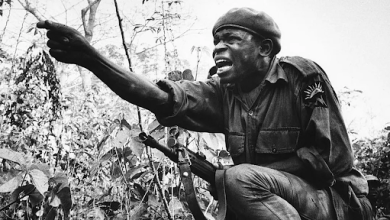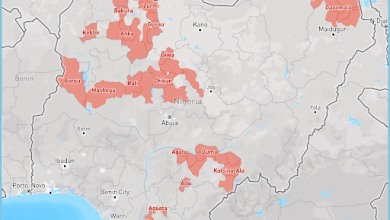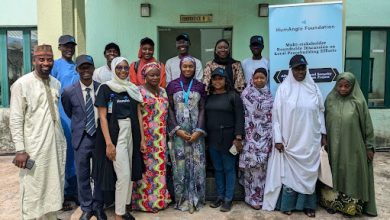Armed Drones Making A Strong Entrance In Nigeria’s Anti-Terror Campaign
The Nigerian military is building up capabilities to rapidly expand the use of armed drones for counterterrorism and counterinsurgency operations. There are, however, concerns about the protection of civilians and the operationality of the platforms.
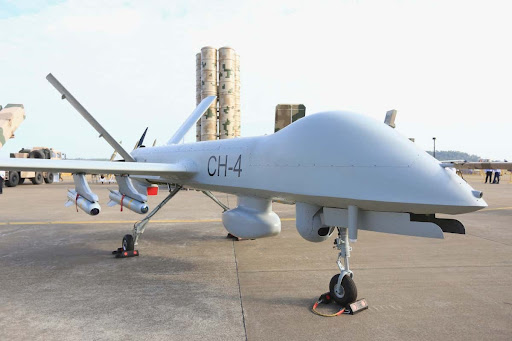
The military campaign against terror groups in Nigeria is set to gradually enter a phase that will be associated with the increasing use of manned aircraft and Unmanned Aerial Vehicles (UAVs) for intelligence gathering and targeted airstrikes.
The recent acquisitions of UAVs, commonly known as drones, are expected to rapidly expand the Air Force’s existing drone programme as well as its Intelligence, Surveillance and Reconnaissance (ISR) capabilities. The armed drones, which are considered to be low-risk force multipliers, will be commandeered by pilots sitting in ground stations located in air bases close to the conflict theatres.
Armed drones already have a history of participation in counterinsurgency operations in the Northeast. For instance, on Jan. 27, 2018, a Nigerian Air Force (NAF) surveillance aircraft and CH-3A drone trailed Boko Haram insurgents withdrawing with a mobile artillery system and gun trucks to the Parisu area of the group’s Sambisa enclave. The scouting drone then dropped an explosive payload and destroyed the artillery system alongside the crew.
The CH-3A drone is capable of loitering above a target of interest for hours and firing AR-1 guided missiles or YC-200 guided bombs. It was part of a set of four acquired from China’s Aerospace Science and Technology Corporation between 2014 and 2015, during the peak of the Boko Haram insurgency.
In July, two Antonov An-124 from Chengdu in China landed at Yola Airport in Adamawa, with cargo that included equipment for the CAIG Wing Loong II medium altitude long endurance (MALE) aircraft. The drone, a lookalike of the American built MQ-9, is equipped to carry an electro-optical payload pod, fitted with sensors for surveillance and targeting, alongside a variety of laser-guided missiles and GPS-guided bombs.
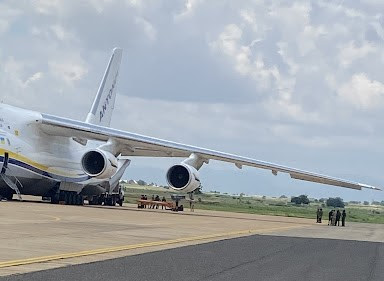
The Wing Loong II is part of a series of new Chinese built drones procured for the Air Force that includes two wing Loong II, two CH-3, and four CH-4 slated for delivery before the end of 2021 to step up surveillance and airstrikes on terror groups in the Northeast and Northwest. In early September, the Air Force announced the winging of 25 additional pilots comprising 20 UAV pilots, 5 fixed and rotary-wing aircraft pilots.
According to the country’s Air Chief, Air Marshal Amao, UAVs, unlike manned aircraft, offer relatively lower costs of procurement, operation, and maintenance as well as the capability to undertake high-risk operations. During the same ceremony, the Chief of Training and Operations, Air Vice Marshal James Gwani, disclosed that 17 pilots completed the UAV Course 3 while three completed the CH-3A UAV Operational Conversion Course at the Air Force 401 Flying Training School located in the Northwest state of Kaduna.
NAF is also setting up the infrastructure for the 203 Combat Reconnaissance Group in Gombe, a town in the Northeast, from where pilots will conduct missions further into the theatre of operation. The Air Force is likely to continue operations from Yola before the new base becomes active.
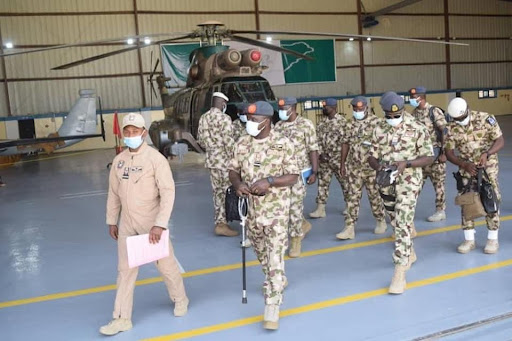
The military has protected the induction from the usual fanfare for new aircraft. This could be connected with the controversial nature of the weapon system. For example, the first batch of the CH-3A became public knowledge when photographs of a crashed aircraft with two AR-1 missiles surfaced online while the presence of Adcom Systems Yabhon Flash-20 from the United Arab Emirates was revealed accidentally in photographs of the Air Staff’s visit to facilities supporting counterinsurgency operations.
Chidi Nwaonu, a defence expert and Director of Peccavi Consults, told HumAngle there are questions about reliability and performance, which have persisted. “But how is it to be used? Is it for strike, deep strike, close air support? Or recce and surveillance. What procedures are in place to positively identify targets and reduce collateral damage?”
Nwaonu added that “the danger is that there will be an over-reliance on these platforms to strike at areas inaccessible to friendly forces [the military], in order to be able to claim some success to the detriment of the civilian population.”
Over the past few years, military airstrikes have been blamed for targeting civilian locations and resulting in casualties in Zamfara, Adamawa, Yobe, and Borno states.
Chinese drones are affordable and accessible to countries such as Nigeria when compared to their Western counterparts. But they also have complicated maintenance and operationality track records. At least, only one of the CH-3A in service with the Air Force was reported to still be operational as of last year.
In 2019, then-nominee for the position of commander, U.S. Africa Command (AFRICOM), General Stephen Townsend, informed the U.S. Senate Armed Services Committee that China provided Nigeria with armed unmanned aerial systems to improve its counterterrorism capabilities, but the poor quality of these platforms has contributed to their infrequent use.
Recently, it was reported that the Chinese drones with the Pakistani military encountered serious problems after suffering from crippling defects within days of induction. In Algeria, multiple CH-4 drones have crashed while undergoing testing by the military.
As of the end of June 2019, only one of Iraq’s CH-4B drones was reported to be fully mission-capable, contributing to a shortfall in the country’s intelligence, surveillance, and reconnaissance capacity. Six Jordanian military CH-4Bs are part of the more than two dozen aircraft put on sale.
As the government responds to diverse security threats and violence perpetrated by terror groups ravaging parts of Nigeria. It is important to integrate procedures to promote transparency in military activities and mitigation of civilian casualties as well as strengthen efforts to address the socio-economic factors behind the crisis.
Support Our Journalism
There are millions of ordinary people affected by conflict in Africa whose stories are missing in the mainstream media. HumAngle is determined to tell those challenging and under-reported stories, hoping that the people impacted by these conflicts will find the safety and security they deserve.
To ensure that we continue to provide public service coverage, we have a small favour to ask you. We want you to be part of our journalistic endeavour by contributing a token to us.
Your donation will further promote a robust, free, and independent media.
Donate HereStay Closer To The Stories That Matter

